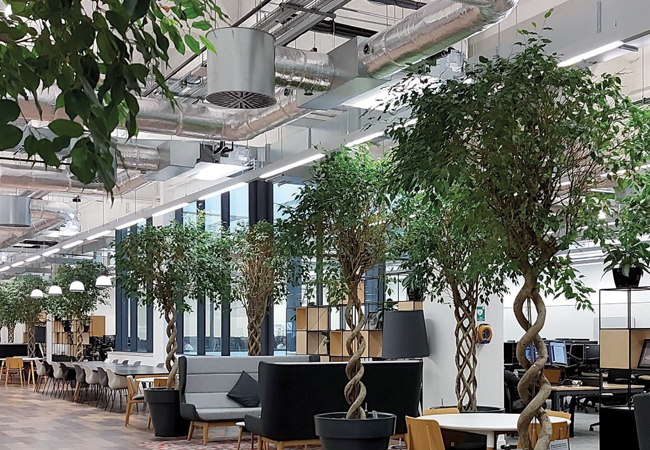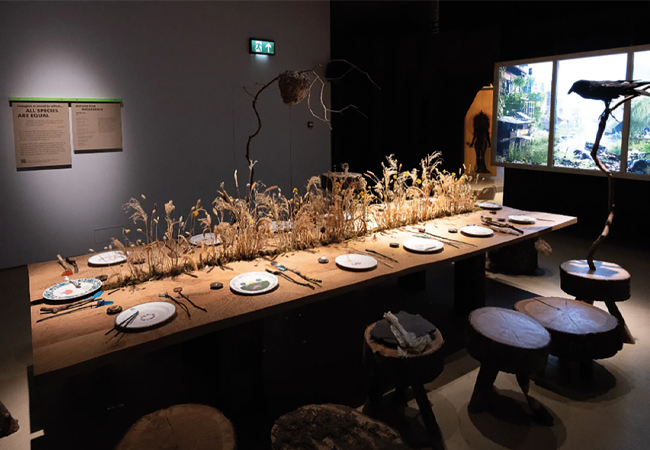

Simon Robinson
The Society of Light and Lighting (SLL) has published the new Lighting Guide 7 (LG7) – Lighting for offices to reflect considerable changes in the working environment in recent years. Head author Simon Robinson FCIBSE FSLL, technical director at WSP, discusses the most important revisions, which include advice on home office lighting, the circular economy and embodied carbon.
What are the main changes to LG7 since the last issue was published in 2015?
This revision has been significant, because of the changes in the way in we now use our office space. For many, home working is now a standard practice and LG7 provides guidance for creating a dedicated home office. A worked example is included in Chapter 13, which discusses the décor and desk placement as important elements in creating or adapting a room into an office.
The use of context modifiers has been given more prominence than previously, with the aim of improving the lighting of workplaces based on the specific tasks being undertaken or people using them. Good lighting design will always consider the specific needs or constraints of a space.
What recommendations are included for home working?
The issues associated with occupational health are just as key when working at home and good lighting has an important role to play. As with traditional workplaces, the colour and texture of the décor and furniture has a significant impact on the way lighting is reflected within the space.
Converted bedrooms may have walls and floor coverings suited to a relaxing space; an office environment is better suited to pale shades, which will help reflect the available light. Décor changes can help, as can the correct placing of the user’s desk. The guidance for home offices is intended to bring these considerations to the fore. Users of these spaces may not realise the influence on not only their energy use, but also on how the space makes them feel.
How does LG7 address the post-pandemic issue of flexible working in offices?
It covers hot desking and the challenge for lighting designers of occupants using a mix of desktop and laptop computers, as well as smart devices, such as tablets and smartphones. LG7 champions the use of localised lighting centred on task areas. The need to consider the context of any task area with regard to the individual using the space and the task being carried out, when an individual desk may be used by several different people, could lead to an increase in the provision of localised lighting solutions.
Are smart controls more of an influence?
Control of lighting through smart technologies allows a tailored approach to the lit environment for individuals, while minimising energy used or wasted. Complex buildings, and buildings with large open areas with different uses, times of occupation or lighting requirements, will benefit from smart controls. The chapter on designing office lighting in LG7 now includes an overview of smart buildings, and the SLL publishes a specific guide, LG14 – Control of electric lighting.
How is embodied energy tackled in office lighting?
As in previous revisions, LG7 puts energy consideration at the forefront of designer’s minds. CIBSE’s TM66 – Creating a circular economy in the lighting industry asks designers to look at reusing serviceable equipment, as too many luminaires are thrown away. LG7 continues the theme of circularity and introduces considerations for embodied energy and carbon.
Embodied energy has been difficult to determine for products that use multiple components from different locations. Common-sense considerations can be made, however. A luminaire manufactured in Asia may have less embodied energy than one made in Europe, but the embodied carbon involved in transporting it to Europe could result in a higher overall impact.
Reusing luminaires will reduce the embodied carbon of the lighting installation as fewer, or even no, new luminaires are being manufactured and shipped.
Maximising daylight reduces operational energy, as luminaires that are not switched on use no energy or a minimum amount to operate control functions.
- LG7 is available at www.cibse.org.knowledge



